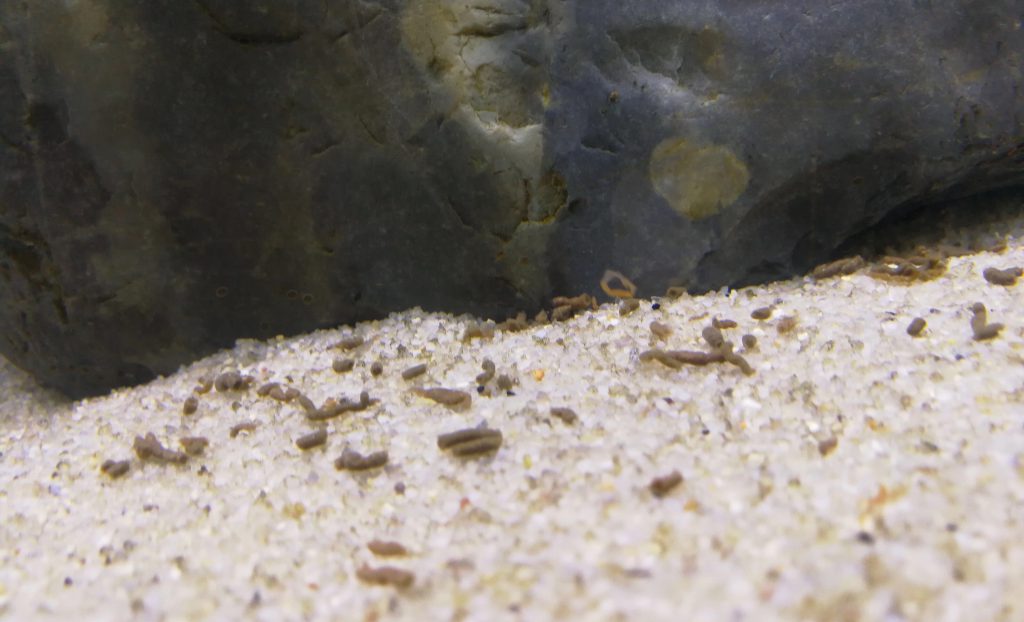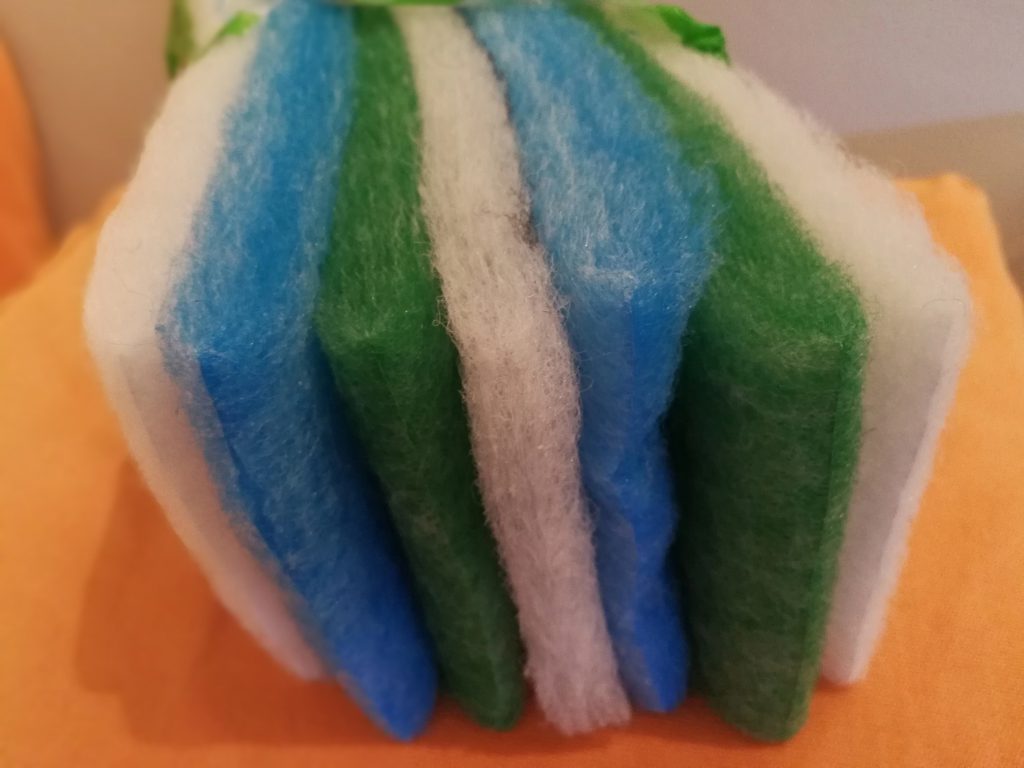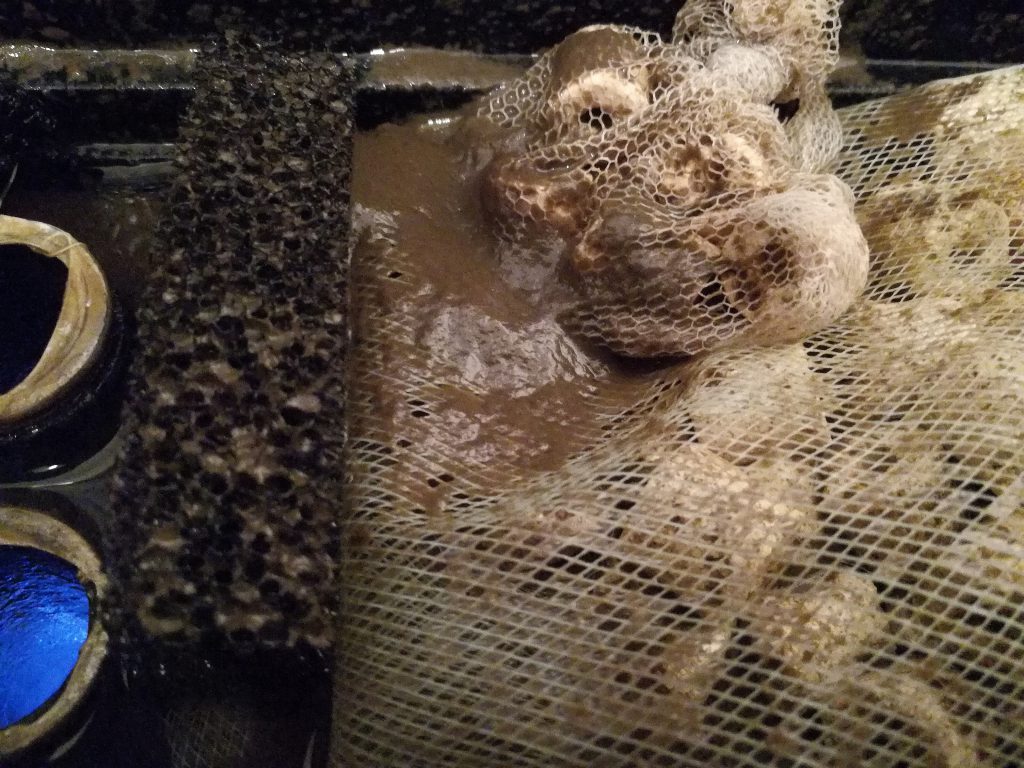Do you know much about fish tank filters? Do you know that fish tank filter is a must-have for any goldfish tank? Do you know why?
Well.. fish tank is an environment where there is a confined volume of water. Over time, physical and chemical wastes will accumulate and make the water dirty and toxic. This is even more so for a goldfish tank. Yes, goldfish are beautiful and graceful, but they are also very messy. They eat a lot and they poop a lot. So their tank can get dirty very quickly.

That’s why fish tank filters are very important. They are essential in providing filtration function to maintain the cleanliness and good quality of the water. What’s the point of goldfish keeping if you can’t see your goldfish through the dirty water or that you have sick or dead fish laying around, right?
Wouldn’t you rather enjoy a tank that is clear and where your goldfish are healthy and happy?

So knowing a little about fish tank filters and how they work will be helpful for you in getting one.
So what is there to know about fish tank filters?
For a start, there are 3 types of water filtration that should happen in your fish tank. They are:
- Mechanical Filtration
Mechanical filtration removes suspended particles such as excess fish food, fish poop, plants and debris from the water. The fish tank water is pushed through the filter media where the suspended particles will be trapped.
Filter media – Wool - Biological Filtration
Biological filtration makes use of nitrifying bacteria colonies to convert toxic chemical compounds such as Ammonia and Nitrite into non-toxic Nitrate. Please check out my post on Nitrogen Cycle for more details. These nitrifying bacteria colonies live and grow in the filter media.
Nitrifying bacteria colonies in filter sponge & ceramic rings - Chemical Filtration
Chemical filtration targets dissolved organic compounds and pollutants. The filter media work by attracting these contaminants and then absorbing or turning them into harmless compounds. A popular filter media for this is the activated carbon.
Activated Carbon
Not all fish tank filters are capable of doing mechanical, biological and chemical water filtration. Different types of fish tank filters may have different capabilities. Let’s check out the 5 common off-the-shelf ones for a goldfish tank.
5 common off-the-shelf filters for a goldfish tank
1. Sponge Filters
Sponge filters or air-driven filters are the most basic and cheapest filters available. You will need an air pump to get them to work. The suction power created by the air bubbles draw water into the sponge and trap physical wastes and debris. The sponge also provide the surface for those good nitrifying bacteria to colonize.

2. Hang on Back (HOB) Filters
HOB or power filters are external filters that hang at the back or the side of a fish tank. When turned on, the impeller will cause a suction mechanism which draw water up the inlet tube and into the filter compartment where the filter media are placed.
Physical wastes and debris get caught in these media which also serve as places for nitrifying bacteria to grow. Most of the time, filter media with activated carbon is included for chemical filtration. Filtered water will return to the tank via the filter outlet.
3. Canister Filters
Canister filters are external filters that can accommodate more filter media. This means that they can do a better filtration job and have the ability to handle larger volume of water. They need less maintenance as well.
Most of the time, canister filters come with filter media for mechanical, biological and chemical filtration. However if you would like to replace those with your preferred filter media or just to add on, you can easily do that with canister filters. Yes, they are really very flexible, but they don’t bend over backwards. 🙂

Canister filters draw the water in from one side, then push the water through the filter media to get to the filter outlet on the other side. Filtration happens as the water passed through the different layers of filter media. At the filter outlet, filtered water is pumped back into the tank.
4. Internal Filters
Internal filters are compact filters that are fully or partially submerged in the fish tank. Some basic ones work like sponge filters but with their filter media enclosed in a box or casing. Some have power heads or motor units to create suction of water into the filters. Water are then passed through the filter media and out from the filter’s outlet.

In many ways, they are like miniature version of canister filters which are placed in the fish tank. Due to their compact size, there is a limitation on how much filter media can be placed in the filter. Besides that, they also take up space in your fish tank.
5. Undergravel Filters
Undergravel filters consist of plastic grates and an uplift tube. These plastic grates are placed below the substrate in the fish tank and are connected to an uplift tube at one corner.
An airstone (which is connected to the air pump), or a power head is used to create suction in the uplift tube. If airstone is used for this purpose, it is placed at the bottom of the uplift tube. If power head is used instead, it is fitted at the top of the uplift tube.

When powered up, the suction in the uplift tube will draw the water in through the plastic grates to the tube. In this process, mechanical filtration happens as wastes and debris are pulled into the substrate and trapped there. The substrate provides a place for bacteria to grow, thus creating biological filtration.
Comparison of these 5 types of filters:
| Types of Water Filtration | Relative Price Range | Pros | Cons | |
|---|---|---|---|---|
| Sponge Filters | Mechanical & Biological | Low | - Cheap - Easy to set up & maintain | - Ugly - No chemical filtration |
| HOB Filters | Mechanical, Biological & Chemical | Medium | - Easy to set up & maintain - Usually include chemical filtration | - Can be noisy - Limited space to add filter media |
| Canister Filters | Mechanical, Biological & Chemical | High | - A lot of filter media can be added to provide better filtration - Can handle larger volume of water | - Expensive - Troublesome to maintain |
| Internal Filters | Mechanical, Biological & Chemical | Medium | - Cheaper than canister filters - Easy to set up | - Limited space for filter media - Take up space in fish tank |
| Undergravel Filters | Mechanical &Biological | Low | - Cheap - Easy to set up | - Very troublesome to maintain - Not suitable for substrate diggers or sifters like goldfish |
When buying a filter…
- Make sure that the filter is capable of handling the water volume of your fish tank. This information is available in the filter’s description or specification.
- Get one that can support all 3 types of water filtration, or at least has the flexibility to do so.
- Find one that goes with what you intend to show in your fish tank. If you think having a filter in the tank will spoil the layout, then get an external filter instead.
- Especially on more expensive filters, read up some reviews on the particular filter model and see whether it’s worth the money.
That’s all I have about fish tank filters. Hope this little bit of information helps!
Note: The following contain affiliate links. For more information, please visit my disclosure page.

Wow! I had no idea so many different filters existed. And I would never have even thought to use one in a regular old goldfish bowl. Thanks for the information.
Hi Catie,
Thanks for the comment. There are really a lot of filters available in the market. You may even find one small enough to fit into your goldfish bowl! Anyhow a goldfish bowl is really too small for a goldfish unless it’s like a gigantic one (I mean the bowl :)). The water condition in a small space can quickly deteriorate and requires frequent maintenance.
I’ve never kept any fish before but I know that it’s a lot of work to keep the tanks clean. For someone who has never kept any fishes before, what type of ornamental fish and filters would you recommend? My preference is small and ‘gentle’ fish.
Hi Yvonne,
Thanks for the visit. IMHO, anyone can keep any fish as long as they have done their proper research to understand and commit to the fish’s requirements & care, the proper way of setting up (ex: cycling the tank), getting the right equipment (ex: tank size) and doing maintenance.
That being said, I think fancy guppies will be a suitable fish candidate for you as they are small, colorful and gentle. I would recommend a tank size of at least 10 gallons for 8 of them. Of course the bigger tank size is always better.
As for filter, my guppies have been doing very well with just sponge filter… that is if you want to go for a cheap but not so pretty option. You can consider a HOB filter as well. Whatever fish or filter that you’re going to get, please make sure your tank is fully cycled before putting the fish in yah. You can check out my other posts on that. Thanks!
Wow, very informative post on filters for fish tanks. I unfortunately never had a fish but did want one. The good news is some of my friends still have a fish, and I will let them know about this post in case they are interested in knowing more about their tanks filters or want to upgrade, thanks for sharing.
Hi Deep,
Thanks for the comments.
Very interesting article. I also had no idea goldfish needed larger tanks or filters. The only fish I ever had success keeping alive was a Beta. I’m not making this up, my child can back me on this. I put the Beta in a bigger tank than what they gave me at the store, but it was small. He got fed when someone remembered, I was working at least 2 jobs & my daughter was 8 or 9. His tank got cleaned when It started to get orange/pinkish looking & I wiped it out. I felt horrible, I pamper my pets & love animals, but am not used to fish! We also had 6 Green Anoles, 1 Leopard Gecko & 3 Dogs! It was a zoo, but it was my zoo & I loved it! At any rate, that fish lived for close to a year! My mind was blown. I never even emptied his tank, just took some water out & put new water in. One day we decided to change the water. We set out a bowl of water, let it sit for 24 hours, I don’t know why, that’s just what I’ve always been told. I made sure the water was the same temp as the water in his tank. I scooped him up with a little cup, dropped him in the new water, rinsed his rocks off & wiped out his tank. No soap. Then I poured him back in. The next day he was on his side & the next he was dead! Should have left him alone, he liked his mess. At any rate, nice article & maybe if I ever want a fish, I’ll check this out some more!
Hi Keli,
Thanks for your sharing. Haha …at one point, my place was a mini zoo too. I have a few tanks of fish, hamsters, guinea pigs and a dog!
Anyway sorry to hear about your betta. Actually you have been doing water changes correctly where you took the water out partially and then refilled them. In this way, the beneficial bacteria still remain in the tank and continue to break toxic ammonia & nitrite to less toxic compound.
It was the last water change where you emptied the tank & cleaned all the rocks that could have wiped off all these beneficial bacteria. That could be the reason why the tank water got toxic and your betta could not take it. Anyway we live and learn. Hopefully if you intend to take up fishkeeping again, my blog here will be of help.
Hi thanks for the comprehensive post on the types of filters and there is so much knowlege on the different type of filters! Is there a particular brand that you would recommend?
Hi Wendy,
Thanks for the comment. I think every brand or “brandless” of the filters have their own advantages and disadvantages. It really depends on your budget and requirements. However if you are looking for a canister filter, I am using one from Eheim (model: classic 2215) which is really good.
So much choice! I didn’t realise there were so many different filters available. It doesn’t seem there is one that stands out against the rest, they all seem to have their pros and cons. Generally speaking though – is it fair to assume the more money you spend on a filter, the better job it will do?
Hi Angela,
Thanks for dropping by. If we are comparing against different filter types, I do believe the ones with more capabilities tend to be more expensive. The thing is, we need to understand our fish tank’s requirements and consider whether it’s really necessary to have all of these capabilities.